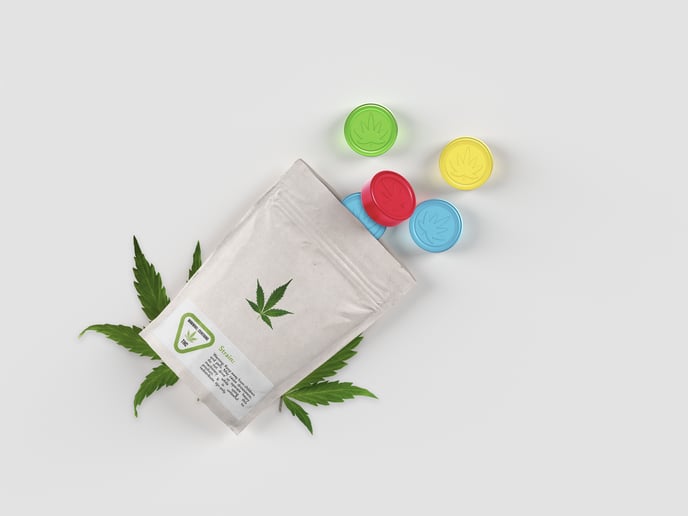Child-resistant packaging is nearly universal in the cannabis space. We explore how it’s achieved, and what this standard means for the wider cannabis packaging industry.
 If anyone who plays in the emerging legal cannabis market today can tell you one thing about packaging, it’s that packaging laws are a moving target. And yet, there’s one regulation that remains nearly universal: child resistance packaging.
If anyone who plays in the emerging legal cannabis market today can tell you one thing about packaging, it’s that packaging laws are a moving target. And yet, there’s one regulation that remains nearly universal: child resistance packaging.
Nearly every state with legal cannabis laws on the books has adopted policies designed to protect children from accidentally ingesting cannabis products. This is increasingly important as the market for cannabis products has expanded beyond the cannabis flower to topicals, concentrates, soaps, and edibles. Lawmakers tend to focus heavily on edibles because its easy to see how children can confuse cannabis edibles for candy.
Child resistance is a safety standard set by laws passed in the 1970s to prevent children from ingesting harmful household chemicals. The same standards apply to today’s cannabis market.
The path to achieve child resistance is an interesting one. Child resistance must be first tested on 50 boys and girls between 3 ½ to 4 years old. The children are given a sample packaging and given 5 to 10 minutes to open. After 5 minutes, if a child has not attempted to use his or her teeth, the test administrator then announces that the children can use their teeth to get into the packaging if they want to.
Only a small percentage of children can gain access to the package for the package to pass and move on to the next step of testing that involves seniors between 50 and 70 years old. The goal here is to ensure that children stay out, but the seniors can still get in.
Michigan-based Dura-Pack supplies flexible packaging and automation systems to the cannabis industry, a journey they’ve been on since 2015, which makes them veterans in this emerging space. Dura-Pack recommends cannabis brands launch products with child resistance packaging, regardless of state legislation.
When Michigan recreational cannabis laws were first approved in 2018, lawmakers focused on the graphics of the package to make sure it wasn’t marketed to children. Soon enough, lawmakers zeroed in on child resistance. This meant all new packaging for many Michigan cannabis brands, regardless of how much inventory they had on shelves.
“The one thing I recommend to everyone, is just go with child resistance out of the gate,” says Dura-Pack co-owner Phillip Harrison. “Our recommendation is whatever your municipality says, go way out in front of it and just start child resistance on everything. Not only are you future proofing your business out of the gate, but from a branding and marketing standpoint it sends the message that you care that children aren’t getting into the packaging.”
And like the Michigan example, if state lawmakers aren’t immediately requiring child resistance, it’s only a matter of time before they will.
Many packaging manufacturers seem to zero in on the zippers and other enclosures, but it’s only one part of the story. If packaging manufacturers are using a child resistance closure, but are using a film that’s easy to tear, they will still fail child-resistant standards.
